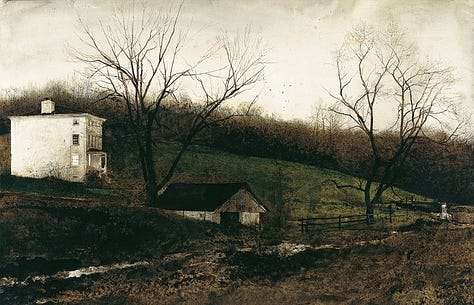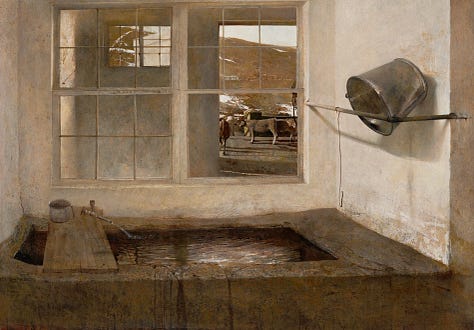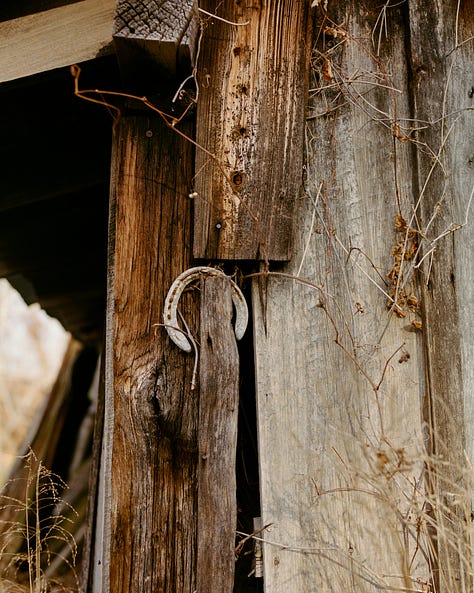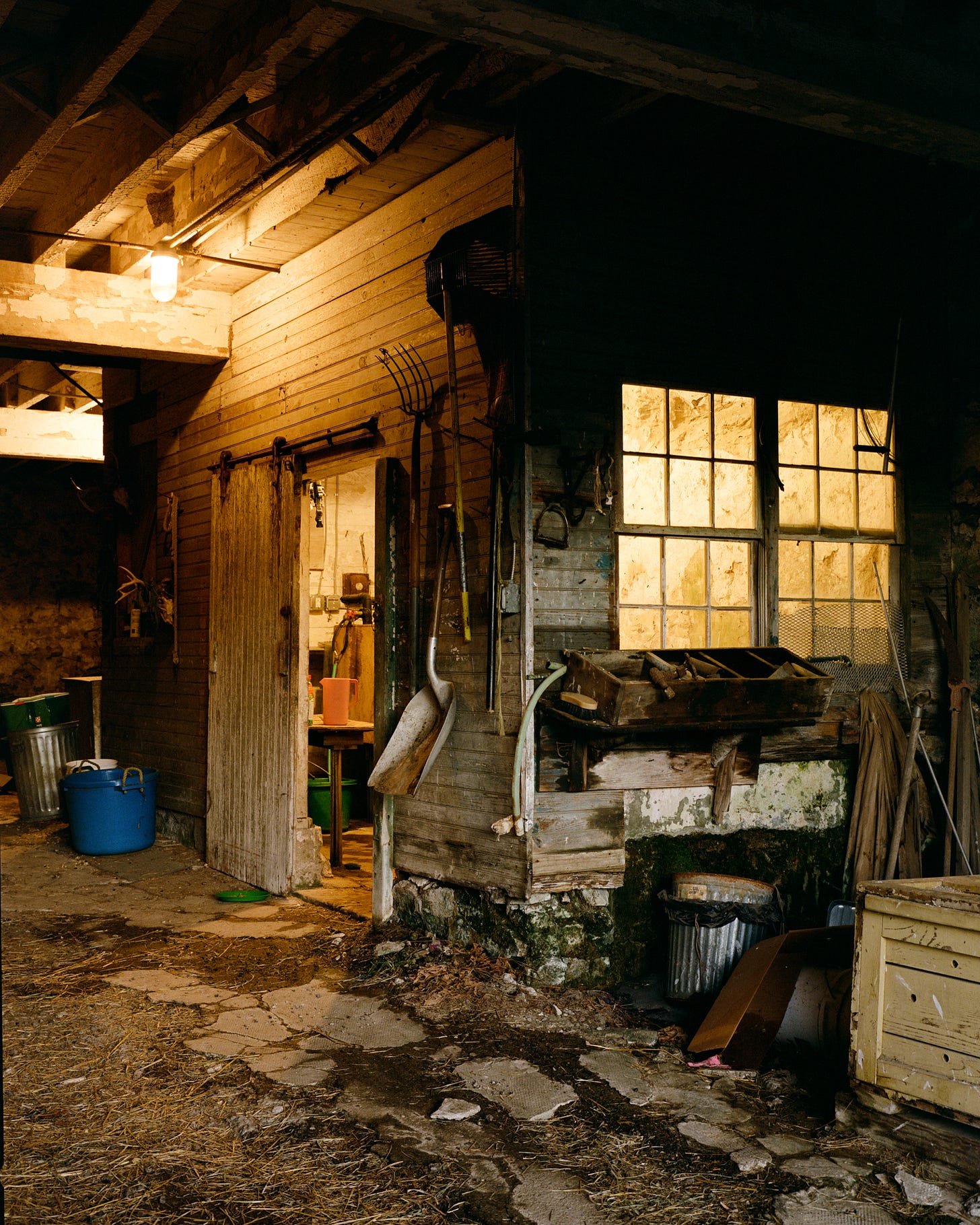I hope everyone has been well. Lately, I’ve been trying to get out for walks as much as possible while taking care of my newborn daughter. I’ve also been taking photos in my free time as much as possible. All these things has left less and less time for social media—which has been nice. The feeling of spring just around the corner is energizing.

I’ve had the opportunity to visit Kuerner Farm over the past few months. It’s a place of deep significance to the Brandywine Valley and the art world in general, as it was where Andrew Wyeth created many of his most well-known paintings. Evening at Kuerner’s, Wolf Moon, and Spring Fed are just a few of my personal favorites from the farm—the list goes on.



To many passing by the farm on Ring Road in Chadds Ford, it might appear to be just another Pennsylvania farmhouse. But a deeper look into its history reveals much more.
I recently came across an article titled “Two Worlds of Andrew Wyeth” from the Met Gallery where Andrew Wyeth had a conversation with Thomas Hoving (a Met curator). After reading this interview, looking through books by Andrew Wyeth and Karl Kuerner, and doing a bit of personal research—including visits to the Brandywine River Museum—I’ve learned a great deal about the place.
The River Museum now owns the farm through a donation by the Kuerner Family, but Karl Kuerner, grandson of the original owner, lives just a stone’s throw away and carries on its artistic legacy.



I reached out to Karl, and through our local connection, he graciously allowed me to visit the farm whenever I’d like—it’s an honor to now call him a friend. He once told me something along the lines of: As long as artists continue to visit the farm and create, the tradition of this place will live on forever. I’d like to believe that this farm, nestled at the foot of the valley, will stand forever.
I’m currently working on a series of images at the farm, an ongoing project that I hope to continue exploring and developing over time. I’ll leave you with this quote from Andrew Wyeth talking about his time at Kuerner Farm:
It is possible that at some point a picture of the door, the stairs, the deep shadow of what is going up those stairs may emerge. And if so, this angular, indomitable figure of Anna Kuerner crunching up those stairs might not even be in the final picture, but those stairs and that door would have had her physical presence. It would be like a mirror, an ancient mirror, with reflections and images still spiritually within it, because I think a person permeates a spot, and that lost presence makes the environment timeless to me. A lost presence keeps an area alive. It pulsates because of that. I never feel that it's a waste of time to make drawings. It is like being in communion with the object, with the place, which soaks up (as a sponge soaks up water) all the life that once existed there. —Andrew Wyeth
Talk soon,
-Matt





What an awesome experience! Thanks for sharing it with us.
I love those Wyeth paintings and your appreciation for the light of that place. The layers in that opening image really captivate me.